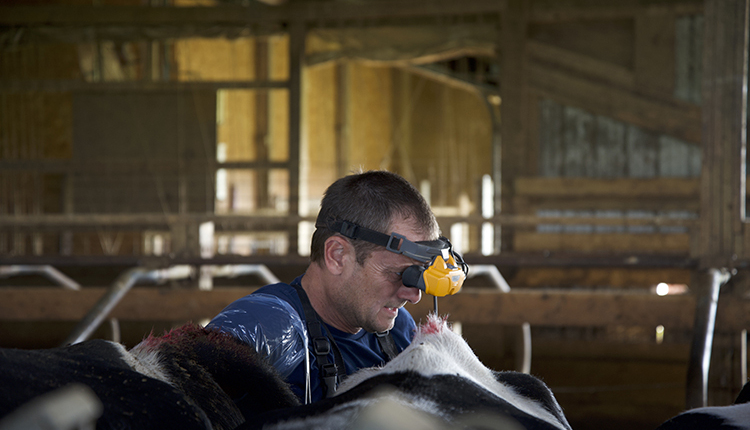
This past February, I had the opportunity to speak at a series of meetings organized by the University of Wisconsin Extension reproduction and genetics work group that we called the “Reproduction Roadshow.” My colleague from UW-Madison and I traveled 820 miles in five days, and we had a great time interacting with the dairy farmers and veterinarians in attendance at the seven locations we spoke at throughout the week. We even took a tour of Lambeau Field while we were in Green Bay. Go, Pack, go!
One of my favorite aspects of the Reproduction Roadshow was learning what questions folks have nowadays regarding reproduction in dairy cattle. An interesting question that generated a lot of discussion at the meeting in Green Bay was, “What is the best strategy for submitting cows for first service?” Now that many farms have invested in new technologies for improving detection of estrous activity, such as automated activity monitoring systems (AAM), should we continue to use fertility programs such as double ovsynch and timed A.I. for first service?
My answer to this question was predicated on the assumption that the reproductive goal of the farm in question was to achieve the highest pregnancy rate possible. This is a reasonable goal because pregnancy rate is a primary driver of farm profitability. Thus, my answer was that I would continue to submit cows for first service using a fertility program and timed A.I., but that after first service, I would incorporate A.I. into the AAM system, thereby combining these technologies together. Here are the three reasons I gave to support my answer to this question.
Consider why cows get pregnant
The first two reasons go hand in hand and have to do with the two primary drivers of the rate cows become pregnant in a dairy herd: the rate at which we put semen into cows, which we call the service rate, and the proportion of inseminated cows that become pregnant, which we call conception rate. We can improve both drivers of pregnancy rate through the use of a fertility program and timed A.I. at first service, thereby boosting the herd pregnancy rate. This is not the case when relying on detection of estrus to inseminate cows.
First, the use of a fertility program and timed A.I. for first service allows for precise control of the voluntary waiting period (VWP). In other words, all cows submitted to a fertility program and timed A.I. are exposed to the risk of becoming pregnant within one week after the end of the VWP. This is not the case when cows are submitted for first service based on estrous activity because not all cows are cycling (we call these anovular cows) and because not all cycling cows express enough estrous activity to trigger the AAM system. Based on many studies using AAM systems, farmers can expect to detect only about 70% of cows with increased activity, which dramatically limits pregnancy rate by limiting the service rate.
Second, the use of a fertility program and timed A.I. for first service raises conception rate compared to cows inseminated to greater activity. Based on a study we conducted in which we directly compared the conception rate of cows submitted to first service using a fertility program and timed A.I. versus A.I. after a detected estrus, farmers can expect a conception rate about 10 percentage points higher when using a fertility program and timed A.I. for first service when using conventional semen. This is why I refer to double ovsynch as a fertility program rather than a synchronization program. Double ovsynch increases the fertility of high-producing dairy cows.
Finally, using a fertility program and timed A.I. for first service is a complementary technology that maximizes use of sexed and beef semen to inseminate cows at first service. We recently published the results from a study in collaboration with a commercial Jersey farm in Wisconsin. We directly compared the conception rate of cows submitted to first service using a fertility program and timed A.I. versus A.I. after a detected estrus for lactating Jersey cows inseminated with either sexed or beef semen. Cows submitted to a fertility program and timed A.I. for first service had conception rates that were 6 to 8 percentage points greater for sexed and beef semen, respectively, compared to submission of cows for first service after a detected estrus.
To summarize my answer to the question of how to submit cows for first service, if your primary reproductive goal is to achieve the highest pregnancy rate possible, it makes sense to continue to submit all cows to a fertility program and timed A.I. for first service. After first service, detecting nonpregnant cows that return to estrus using an AAM system can further drive the service rate and pregnancy rate on your dairy.








